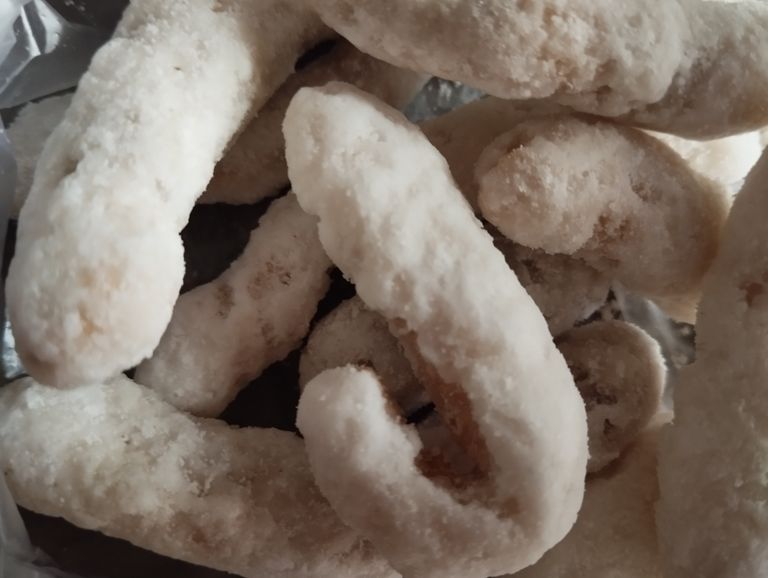
How to Make Traditional Khurma A Step by Step Recipe.
Khurma, also known as shakarpara or sweet diamond cuts, is a traditional South Asian dessert that is loved for its crispy texture and sweet flavor. This snack is a perfect treat for festivals, family gatherings, or simply to enjoy with tea. Making khurma at home is quite easy, and the ingredients are readily available. Follow this step-by-step guide to prepare delicious khurma in your kitchen.
Ingredients
To make khurma, you will need:
For the Dough:
All-purpose flour (maida): 2 cups
Semolina (optional): 2 tablespoons (for extra crispiness)
Salt: A pinch
Oil or ghee: 2 tablespoons (for the dough)
Water: As needed to knead the dough
For the Syrup:
Sugar: 1 cup
Water: ½ cup
Cardamom powder: ½ teaspoon
Lemon juice: A few drops (to prevent crystallization)
For Frying:
Oil or ghee: For deep frying
Instructions
Step 1: Prepare the Dough
- In a large mixing bowl, combine the all-purpose flour, semolina, and a pinch of salt.
- Add the oil or ghee to the dry ingredients and mix well until it forms a crumbly texture.
- Gradually add water and knead into a firm but smooth dough. Cover the dough with a damp cloth and let it rest for 20–30 minutes.
Step 2: Roll and Cut the Dough
- Divide the dough into smaller portions for easy handling.
- Roll out each portion into a thin sheet, about 1/8 inch thick.
- Using a sharp knife or a pastry cutter, cut the rolled dough into small diamond or square shapes.
Step 3: Fry the Khurma
- Heat oil or ghee in a deep frying pan over medium heat.
- Once the oil is hot, reduce the heat to low and carefully add the cut pieces of dough. Fry in small batches to avoid overcrowding.
- Fry the khurma until they turn golden brown and crispy. Remove them from the oil and place them on a paper towel to drain excess oil.
Step 4: Prepare the Sugar Syrup
- In a saucepan, combine sugar and water. Heat the mixture over medium heat while stirring until the sugar dissolves completely.
- Add cardamom powder and a few drops of lemon juice.
- Cook the syrup until it reaches a one-string consistency. (To test, take a small amount of syrup between your thumb and forefinger; when you pull them apart, a single thread should form.)
Step 5: Coat the Khurma
- Transfer the fried khurma into a large mixing bowl.
- Pour the prepared sugar syrup over the khurma while it's still warm. Toss well to ensure that all the pieces are evenly coated with the syrup.
- Allow the khurma to cool completely. As the syrup cools, it will crystallize, giving the khurma a sweet, crunchy coating.
Tips for Perfect Khurma
Consistency of Dough: The dough should be firm but pliable. Avoid adding too much water, as it will make the khurma soft instead of crispy.
Frying Temperature: Always fry on low to medium heat. High heat will cook the outside quickly but leave the inside undercooked.
Sugar Syrup: The one-string consistency is crucial for a perfect sugar coating. Overcooking the syrup will make it too thick, while undercooking will result in a sticky coating.
Storage
Store the khurma in an airtight container at room temperature. It stays fresh for up to two weeks, making it an excellent make-ahead snack.
Khurma is a delightful combination of simplicity and sweetness that brings joy to any occasion. Whether you’re making it for a festive celebration or just to enjoy with your family, this traditional recipe is sure to impress. Try it at home and savor the crispy, sweet goodness of homemade khurma.
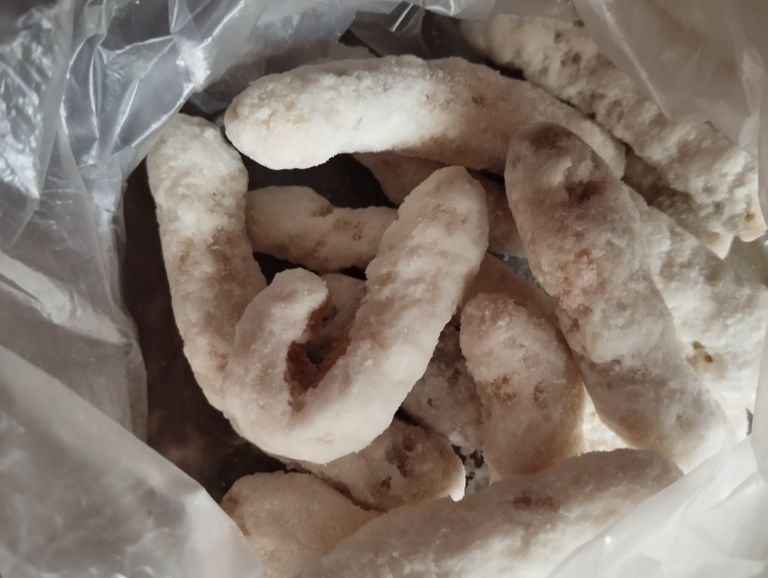
How to Make Sweets at Home: A Step-by-Step Guide
Sweets hold a special place in every celebration, festival, and moment of joy. Whether it’s a festival, a wedding, or a casual family gathering, homemade sweets add a unique charm to any occasion. Making sweets at home can seem like a daunting task, but with the right ingredients, techniques, and a bit of patience, you can create mouthwatering delicacies. This blog provides a comprehensive guide to making sweets at home, focusing on easy-to-follow steps, tips, and variations.
- Ingredients for Homemade Sweets
The key to delicious homemade sweets lies in using fresh and high-quality ingredients. Below are some common ingredients:
Milk and Milk Products: Whole milk, condensed milk, milk powder, and cream are often the base for many sweets like rasgulla, peda, and barfi.
Sugar: Granulated sugar or powdered sugar is used for sweetening. You can also use alternatives like jaggery or honey for a healthier version.
Flour: All-purpose flour, semolina, or chickpea flour is used for making sweets like gulab jamun and laddoo.
Ghee (Clarified Butter): Enhances the flavor and aroma of sweets.
Dry Fruits and Nuts: Almonds, cashews, pistachios, and raisins add a rich texture and taste.
Spices: Cardamom powder, saffron strands, and rose water are common for flavoring.
Cocoa and Fruits: For modern variations, cocoa powder, chocolates, and fresh fruits like mangoes can be used.
- Essential Tools for Making Sweets
Having the right tools makes the process smoother:
Non-stick pans or heavy-bottomed utensils to prevent burning.
Measuring cups and spoons for accuracy.
Whisk or hand blender for mixing.
Rolling pin for shaping dough-based sweets.
Molds for decorative shapes.
- Popular Sweet Recipes to Try at Home
a. Gulab Jamun
Soft and spongy gulab jamuns are a classic Indian sweet.
Ingredients:
1 cup milk powder
1/4 cup all-purpose flour
2 tbsp ghee
1/4 cup milk
1 cup sugar
1.5 cups water
Cardamom pods
Steps:
- Mix milk powder, flour, and ghee. Gradually add milk to form a soft dough.
- Shape the dough into small balls.
- Heat oil or ghee and deep-fry the balls on low heat until golden brown.
- Prepare sugar syrup by boiling water, sugar, and cardamom.
- Soak the fried balls in warm syrup for at least 30 minutes before serving.
b. Coconut Laddoo
A simple and quick sweet made with coconut and condensed milk.
Ingredients:
2 cups desiccated coconut
1 cup condensed milk
Cardamom powder
Steps:
- In a pan, roast the coconut for 2-3 minutes.
- Add condensed milk and mix well until the mixture thickens.
- Add cardamom powder and let the mixture cool slightly.
- Roll the mixture into small balls and coat them with extra coconut.
c. Sandesh
A traditional Bengali sweet made with fresh paneer (chhena).
Ingredients:
1 liter full cream milk
2 tbsp lemon juice
1/2 cup powdered sugar
Cardamom powder
Steps:
- Boil milk and curdle it with lemon juice to make paneer. Strain and press out excess water.
- Knead the paneer until smooth.
- Cook the paneer with sugar on low heat until it thickens slightly.
- Shape into desired forms and garnish with dry fruits.
- Tips for Perfect Homemade Sweets
Always measure ingredients properly for consistent results.
Use fresh milk and ghee for a rich taste.
Cook sugar syrup to the right consistency, as it is crucial for sweets like gulab jamun and jalebi.
For a smooth texture, knead the dough or paneer until soft.
Experiment with flavors like chocolate, mango, or strawberry for a modern twist.
- Storing Homemade Sweets
Store sweets in an airtight container to maintain freshness.
Refrigerate milk-based sweets and consume them within 2-3 days.
Dry sweets like laddoo can last longer if stored in a cool, dry place.
- Modern Variations of Traditional Sweets
Chocolate Barfi: Replace some sugar with melted chocolate for a fusion twist.
Mango Rasgulla: Add mango pulp to the syrup for a fruity flavor.
Vegan Options: Use almond or coconut milk instead of dairy milk for vegan sweets.
Making sweets at home is not only rewarding but also allows you to customize the flavors and ingredients. With these recipes and tips, you can easily prepare delightful sweets for any occasion. So, roll up your sleeves, gather your ingredients, and start creating your favorite homemade sweets today.
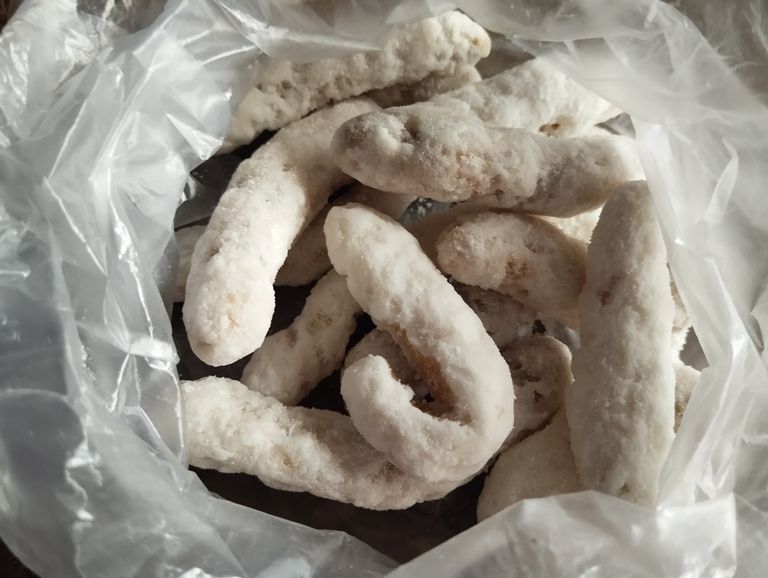
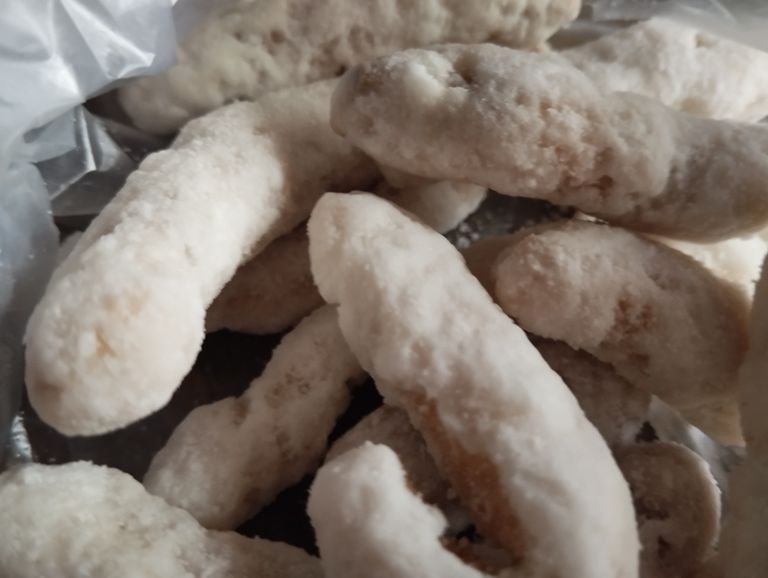
Benefits of Eating Sweets: A Sweet Delight for Body and Mind
Sweets have been an integral part of human culture and culinary traditions for centuries. Whether it’s a festive occasion, a moment of celebration, or just a craving for something delightful, sweets often bring joy and comfort. While excessive consumption of sweets is linked to health concerns, moderate indulgence can offer surprising benefits. This blog explores the potential advantages of consuming sweets, highlighting how they can positively impact our body and mind.
- Instant Energy Boost
Sweets, particularly those rich in simple sugars like glucose, act as a quick source of energy. When consumed, these sugars are rapidly broken down in the body, providing an immediate boost in energy levels. This makes sweets a great snack for athletes or anyone needing a quick recharge during a long day.
For example, chocolates and sugary candies are often carried by hikers and runners for quick recovery during intense physical activities.
- Mood Enhancement
One of the most notable benefits of eating sweets is their ability to improve mood. When you eat sweets, your brain releases dopamine, a neurotransmitter associated with pleasure and happiness.
This is why a bite of chocolate or a piece of cake can feel so comforting during stressful times. Additionally, desserts like dark chocolate contain compounds like serotonin, which further enhance feelings of well-being.
- Improved Brain Function
Sugar, when consumed in moderation, plays a critical role in cognitive functions. The brain relies on glucose for its energy needs. A small sweet treat can help enhance focus, memory, and overall mental performance, especially when you’re feeling mentally fatigued.
However, it’s important to choose natural sugars found in fruits or minimally processed sweets to avoid long-term negative effects.
- Boosting Social Connections
Sharing sweets is a universal way of fostering relationships. From offering sweets during festivals to celebrating milestones with desserts, these treats often symbolize love, care, and togetherness.
Sweets can break the ice in social gatherings, making them a tool for creating memories and strengthening bonds with others.
- Nutritional Benefits from Certain Sweets
Not all sweets are unhealthy. Many traditional sweets incorporate ingredients with nutritional value. For instance:
Dark Chocolate: Rich in antioxidants, it helps combat free radicals, supports heart health, and improves brain function.
Honey-based Desserts: Honey is a natural sweetener with antibacterial and anti-inflammatory properties.
Nut-based Sweets: Sweets made with almonds, pistachios, or cashews are rich in healthy fats, proteins, and essential vitamins.
These wholesome sweets provide a combination of taste and health benefits when consumed in moderation.
- Encouraging Creativity in the Kitchen
Making sweets at home can be a delightful and creative process. Baking a cake, preparing cookies, or crafting traditional sweets allows you to experiment with flavors, textures, and decorations.
This activity not only results in a delicious outcome but also offers a therapeutic and fulfilling experience.
- Supporting Festive and Cultural Traditions
Sweets are deeply embedded in cultural and religious traditions worldwide. Consuming them during festivals or celebrations connects individuals to their heritage and adds a sense of festivity to special occasions.
In countries like India, sweets like laddoos and barfis are integral to rituals, symbolizing prosperity and happiness.
- Potential Health Benefits of Natural Sugars
Some sweets made from natural sugars, such as dates or jaggery, have added health benefits:
Jaggery: Known to aid digestion, cleanse the liver, and provide a good source of iron.
Dates: Packed with fiber, vitamins, and minerals, they support digestive health and boost immunity.
Including such sweets in your diet can offer a guilt-free way to satisfy your sweet cravings.
- Encouraging Balance and Moderation
Enjoying sweets teaches the importance of balance and moderation in life. Rather than eliminating sweets altogether, incorporating small portions into a healthy diet can help curb cravings and prevent overindulgence.
Mindful eating ensures you savor the treat without compromising your health goals.
Tips for Healthy Sweet Consumption
- Choose Quality Over Quantity: Opt for homemade or minimally processed sweets to avoid excessive sugar and artificial additives.
- Pair Sweets with Healthy Foods: Combine sweets with nuts, fruits, or yogurt to enhance their nutritional value.
- Practice Portion Control: Enjoying a small piece of dessert is better than overindulging in large quantities.
- Stay Active: Regular physical activity helps balance the occasional indulgence in sweets.
Conclusion
Sweets are more than just delicious treats; they can uplift your mood, energize your body, and even contribute to cultural and social experiences. While it’s essential to be mindful of the quantity and quality of sweets consumed, moderate indulgence can be a delightful part of a healthy lifestyle.
So, the next time you reach for a piece of chocolate or a slice of cake, savor it guilt-free, knowing that it’s more than just a treat – it’s a moment of joy and nourishment for your soul.
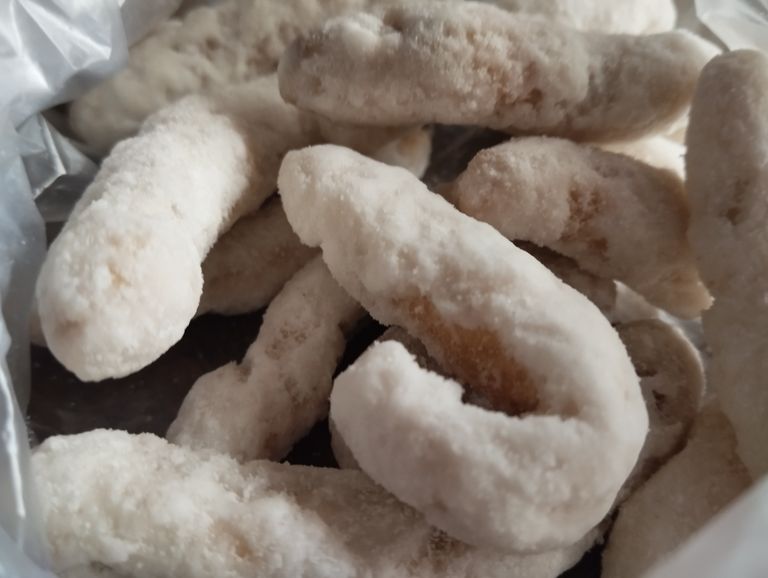
How Much Sweet Can Diabetic Patients Eat? A Comprehensive Guide
Managing diabetes can be challenging, especially when it comes to controlling sugar cravings. For individuals with diabetes, consuming sweets in moderation is key to maintaining stable blood sugar levels and preventing complications. However, "how much sweet can a diabetic eat?" is a common question that requires careful consideration.
Understanding Diabetes and Sugar
Diabetes is a condition where the body cannot effectively regulate blood sugar levels. There are two main types:
- Type 1 Diabetes: The body produces little or no insulin.
- Type 2 Diabetes: The body becomes resistant to insulin or doesn’t produce enough of it.
Both types require careful monitoring of carbohydrate intake, as carbohydrates, including sugar, directly impact blood glucose levels.
Can Diabetics Eat Sweets?
Yes, diabetics can eat sweets, but the key lies in moderation and making informed choices. Sweets contain simple carbohydrates that are quickly absorbed, leading to rapid spikes in blood sugar levels. However, occasional indulgence is possible if done responsibly.
Guidelines for Eating Sweets
Here are some practical tips for diabetics who want to include sweets in their diet:
- Portion Control
Keep the serving size small.
A small piece of dark chocolate or a few bites of a dessert can satisfy your craving without causing significant blood sugar spikes.
- Consider Total Carbohydrate Intake
Monitor the total carbohydrates in your meal, including sweets.
Balance the carbohydrates from sweets with other components of the meal to avoid exceeding your daily limit.
- Opt for Low-Glycemic Sweets
Choose sweets made with low-glycemic index (GI) ingredients like whole grains, nuts, and fruits.
Sugar substitutes like stevia, erythritol, or monk fruit can be good alternatives.
- Combine Sweets with Fiber or Protein
Pairing sweets with fiber or protein can slow down the absorption of sugar, minimizing blood sugar spikes.
For example, enjoy a small portion of dessert with nuts or yogurt.
- Avoid Sugary Beverages
Sugary drinks like sodas and juices are absorbed rapidly and can cause sudden spikes in blood sugar levels.
Stick to water, unsweetened tea, or beverages with sugar substitutes.
How Much Sweet is Safe?
The amount of sweet a diabetic can eat varies based on individual factors such as:
Blood sugar levels.
Medications or insulin dosage.
Physical activity.
It is crucial to consult a healthcare provider or dietitian for personalized advice. Generally, sweets should not exceed 10% of your daily caloric intake. For instance, if you consume 1,500 calories a day, aim for no more than 150 calories from sweets, equivalent to about 1-2 small cookies or a small serving of dessert.
Best Sweet Options for Diabetics
- Dark Chocolate: Rich in antioxidants and lower in sugar than milk chocolate.
- Fresh Fruits: Natural sweetness with added fiber and nutrients.
- Greek Yogurt with Honey: A protein-packed treat with a touch of sweetness.
- Homemade Desserts: Use sugar substitutes and control ingredients.
- Small Portions of Traditional Sweets: Occasionally enjoy traditional sweets in limited quantities.
The Role of Exercise
Regular physical activity can help manage blood sugar levels, making it easier to indulge occasionally in sweets without significant impact. A brisk walk after a meal can reduce post-meal glucose spikes.
Final Thoughts
While managing diabetes requires discipline, it doesn’t mean you have to completely eliminate sweets. With careful planning, portion control, and smart choices, you can enjoy an occasional treat without jeopardizing your health. Always prioritize a balanced diet, regular monitoring of blood sugar levels, and consultation with your healthcare provider.